home >> events
and announcements >> Botkin Lecture
Series
 |
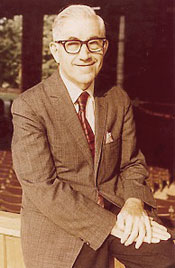
Benjamin A. Botkin. Photo courtesy
of the National Council for the Traditional Arts. |
|
 |
Benjamin A. Botkin Folklife Lecture Series
Through the Benjamin A. Botkin Folklife Lecture Series, the American
Folklife Center presents the best of current research and practice
in Folklore, Folklife, and closely related fields. The year-round
series of monthly lectures invites professionals from both academia
and the public sector to present findings from their ongoing research
and fieldwork. The Botkin series is free and open to the general
public. In addition, each lecture is video and audio recorded by
the AFC for permanent deposit in the Archive of Folk Culture, where
students, scholars, and other interested people can access them.
Benjamin A. Botkin (1901-1975) was a pioneering
folklorist who believed that people continually create folklore
out of their collective experiences. According to historian
Jerrold Hirsch, Botkin "attempted to formulate an approach
to the study of American folklore that took into account the
nation's different regions, races, and classes, and showed
the interrelationship between folk, popular, and high culture." Botkin
worked on the interregional Folk-Say anthologies (1929-32),
was national folklore editor of the Federal Writers' Project
(1938-39), chief editor of the Writers' Unit of the Library
of Congress Project (1939-1941), head of the Archive of American
Folksong (1942-45), and author of numerous folklore treasuries,
beginning with A Treasury of American Folklore (1944). Botkin
left today's folklorists an inspiring treasury of ideas and
phrases that they readily use and honor, and the American Folklife
Center itself is heavily indebted to his work as both a folklorist
and a government official. For all these reasons, the American
Folklife Center has chosen to name this lecture series in his
honor. >> more about Benjamin
Botkin
2009 BOTKIN LECTURES
January 27, 2009, 12:00 noon - 1:00 pm
Pickford Theater, 3rd Floor, James Madison Building
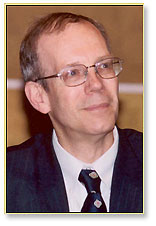 Revolutionaries, Nursery Rhymes, and Edison Wax Cylinders: The Remarkable Tale of the Earliest Korean Sound Recordings,
presented by Robert Provine, University of Maryland. Revolutionaries, Nursery Rhymes, and Edison Wax Cylinders: The Remarkable Tale of the Earliest Korean Sound Recordings,
presented by Robert Provine, University of Maryland.
On July 24, 1896, the pioneering ethnologist Alice Fletcher recorded six wax cylinders documenting the singing of three Koreans who were studying in Washington, D.C. Now housed in the American Folklife Center Archive, these cylinders have proved to be the earliest known recordings of Korean music. As interesting as the recordings themselves, are the extraordinary circumstances surrounding how they came to be made, as well as the remarkable group of people, both Korean and American, who were involved in this landmark project. This richly illustrated lecture explores the historical circumstances and the musical significance of these remarkable and remarkably early wax cylinders. Ethnomusicologist Robert Provine is a Professor at the University of Maryland’s School of Music. From 1978 until 2000, he was Professor of Music at the University of Durham in the U.K. A past President of the Association for Korean Studies in Europe, he is author of Essays on Sino-Korean Musicology: Early Sources for Korean Ritual Music (1988), as well as numerous articles on Korean traditional music.
PAST 2008 LECTURES
October 21, 2008, 12:00 noon – 1:00 pm
Whittall Pavilion, Ground Floor, Thomas Jefferson Building
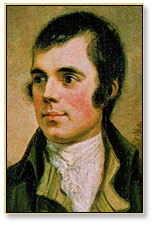 A Bard of Nature’s Making: Robert Burns and Scottish Traditional Culture A Bard of Nature’s Making: Robert Burns and Scottish Traditional Culture
presented by Valentina Bold, University of Glasgow
Valentina Bold will explore the ways in which Burns’s work draws on, and influences, the traditional culture of Scotland. Looking in particular at his engagement with traditional songs and legends—from “A Red Red Rose” to “Tam o Shanter,” Bold also considers the impact of Burns’s image as a self-styled “Bard of Nature’s Making” on later Scottish poets and songwriters. Bold will suggest that the image of the “Heaven-taught ploughman”—in itself drawing on the work of earlier writers like Allan Ramsay and James Macpherson of Ossian fame—played a hugely significant role in validating and facilitating the work of other Scottish “peasant poets.” In conclusion, the lecture will consider Burns’s impacts on other Scottish bards “of Nature’s making” including James Hogg (“the Ettrick Shepherd”) and Allan Cunningham (“the Nithsdale Mason.”)
Valentina Bold is Head of Scottish Studies at the University of Glasgow’s Dumfries campus. Robert Burns spent his final years in Dumfries, and Bold is part of the BARD team there (Burns Research in Dumfries). She convenes the taught postgraduate M.Litt programme in Robert Burns Studies, as well as the M.Litt in Scottish Cultural Heritage. She is known for her work on Scottish poetry and song, and she has a particular interest in the Scottish communities of the U.S. and Canada. Bold’s publications include James Hogg: A Bard of Nature’s Making and Smeddum: A Lewis Grassic Gibbon Anthology, as well as the CD-ROM Northern Folk: Living Traditions of North East Scotland. She is currently working on a new edition of Burns’s Merry Muses of Caledonia, to be published in late 2008.
September 4, 2008, 12:00 noon - 1:00 pm
Mary Pickford Theater, 3rd Floor, James Madison Building
 Kunqü: China's First Great Multi-art Theatrical Tradition Kunqü: China's First Great Multi-art Theatrical Tradition
presented by Marjory Bong-Ray Liu, Arizona State University
Dating from the Ming Dynasty of the sixteenth and seventeenth-centuries, Kunqü is the earliest unified form of Chinese classical opera. It embodies the beauty of poetic lyrics, musical flair, elegant costume, stylized make up, dramatic sophistication, and artistic dance movements integrated into a harmonious whole. Kunqü characteristics include vocal ornamentation and emotional intensity, symbolism and grace in costume design and dance gestures, and a unique correlation between Chinese language tones and melodic tunes. These elements combine to make Kunqü an aural and visual delight. Although many of Kunqü’s performance practices were incorporated into the later Peking Opera style, the older Kunqü tradition is itself undergoing a revival in China as a revered art form. In 2001 it was recognized by UNESCO as one of the Masterpieces of the Oral and Intangible Heritage of Humanity.
Dr. Marjory Bong-Ray Liu was born and raised in China. She came to the United States to study music therapy, music education, and ethnomusicology, and received a Ph.D. from UCLA for her dissertation on Chinese Kunqü opera. She taught Ethnomusicology and Chinese and Asian Art, Philosophy and Culture at Arizona State University until her retirement in 1989. In 1980, she was one of the first American-based scholars invited to teach ethnomusicology at the Central Conservatory of Music in Beijing. In 1981, she was Guest Resident at the nationally acclaimed Jiangsu School of Opera in Nanjing. She has published extensively in English, Chinese, and German scholarly journals, and contributed all entries on Taoism to the 2003 encyclopedia Treasury of Mystic Terms.
August 5, 2008, 12:00 noon - 1:00 pm
Montpelier Room, 6th Floor, James Madison Building
 "Do All Indians Live in Tipis?" and Other Compelling Questions for Education "Do All Indians Live in Tipis?" and Other Compelling Questions for Education
presented by Edwin Schupman, National Museum of the American Indian
Stereotypes, inaccuracies, and inappropriate representations of Native Americans continue to abound in American society today. Reflecting on his twenty years of experience working in the field of American Indian education, the speaker will explore examples, causes, and implications of the current state of awareness about Native peoples and issues.
Edwin Schupman is a citizen of the Muscogee (Creek) Nation of Oklahoma. He is an education materials developer at the National Museum of the American Indian (NMAI) and co-author of the book Do All Indians Live in Tipis?: Questions and Answers from the National Museum of the American Indian (Collins, 2007).
June 20, 2008, 12:00 noon - 1:00 pm
Whittall Pavilion, Ground Floor, Thomas Jefferson Building
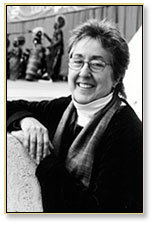 Old Cultures/New Contexts: Presenting the Traditional Music and Dance of Urban Immigrant Communities presented by Ethel Raim, Center for Traditional Music and Dance Old Cultures/New Contexts: Presenting the Traditional Music and Dance of Urban Immigrant Communities presented by Ethel Raim, Center for Traditional Music and Dance
Ethnographer and performer Ethel Raim, co-founder and artistic director of New York's celebrated Center for Traditional Music and Dance (CTMD), discusses her five decades of work with community-based traditional artists in urban America. Beginning at a time when to most Americans "folk music" was practically synonymous with rural and Anglo-Saxon, Raim built on her own interests in Balkan music and dance to document and collaborate with a wide panoply of urban ethnic communities. These communities often had little in common with each other, except a strong commitment to their traditions and the presence of outstanding master artists. Through CTMD, Raim and her colleagues identified and documented performers and strengthened commitments and educational opportunities within communities. At the same time, they developed innovative approaches that introduced many previously in-group traditions to mainstream audiences. By educating Americans about the wealth of world cultures surrounding them, she literally and figuratively brought ethnic music from church basements to center stage. Raim will share stories about what it was like to be at the epicenter of the theoretical and applied folklore movements that rediscovered and revitalized numerous performing genres -- including Irish, Albanian, Puerto Rican, and Jewish klezmer musics - that are now integral to America's musical landscape.
Ethel Raim is Artistic Director of the Center for Traditional Music and Dance (CTMD), one of the nation’s preeminent traditional arts organizations. CTMD has served New York City for the past four decades. Raim has also had a long-standing career as a performer, singing teacher and recording artist; she was a founding member and director of the pioneering women’s vocal ensemble, the Pennywhistlers. From 1965 to 1975, Raim was music editor of Sing Out Magazine, and served as music editor for numerous folk song collections. With funding from the Smithsonian Institution, the International Research and Exchanges Board, the National Endowment for the Arts, and the New York State Council on the Arts, Raim has conducted field research in the expressive folk traditions of urban American immigrant communities over the past 40 years. She was a researcher and program director for Balkan and Slavic cultures for the Smithsonian Institution’s Folklife Festival, and in 1975 joined Martin Koenig as co-director of the Center for Traditional Music and Dance. Raim has curated and overseen the production of hundreds of artistic presentations, and has developed many of the innovative program models for which CTMD is best known, including their Community Cultural Initiatives – long-term projects designed to establish and nurture community-based documentation, presentation and cultural preservation in New York’s immigrant communities. Under Raim’s leadership, the Center has become one of America’s leading proponents of what the late Alan Lomax called "cultural equity," the right of every community or ethnic group to express and sustain its distinctive cultural heritage. http://www.ctmd.org
June 3, 2008, 12:00 noon - 1:00 pm
Montpelier Room, 6th Floor, James Madison Building
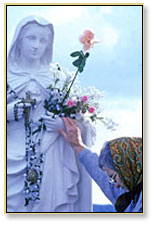 Seeing Mary: Belief, Politics, and Practice at Marian Apparition Sites Seeing Mary: Belief, Politics, and Practice at Marian Apparition Sites
presented by Anne Pryor, Wisconsin Arts Board
What happens in a community after a Catholic claims to see and hear Mary, the Blessed Mother? Always a challenging situation, the claims are contested while individuals try to discern the credibility of the visionary and the apparition. Those who choose to believe develop devotional practices to honor Mary at the site made sacred through her visit. These devotions are both ancient and emergent, drawing on Catholic traditions while incorporating new technologies and contexts. This talk will focus on the politics and practice of apparitions in communities in the United States, ranging from the 1950s events in Necedah, Wisconsin, to the current ongoing apparition in Emmitsburg, Maryland. Looking at these examples will provide insights into the beliefs that structure contemporary Marian devotion.
Anne Pryor has had a life-long fascination with Marian devotion, starting with sensuous Queen of the May crownings in her Catholic parish, when she was a child in New York. She has formalized this interest over the past twenty-five years through research as a cultural anthropologist, studying apparitions of Mary and multiple other forms of Marian devotion across the United States and in Mexico, Canada, Bosnia-Hercegovina, and other European sites. She is currently writing a novel about pilgrimage to a Marian apparition in Kentucky. Dr. Pryor works at the Wisconsin Arts Board where she specializes in folk arts education. She is a co-founder of Wisconsin Teachers of Local Culture, project director of the award-winning websites Wisconsin Folks and Wisconsin
Weather Stories, and co-editor of the award-winning curriculum Quilting Circles, Learning Communities.
May 21, 2008, 12:00 noon - 1:00 pm
Pickford Theater, 3rd Floor, James Madison Building
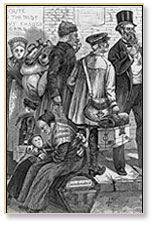 Empires, Multiculturalisms, and Borrowed Heartsongs: What Does It Mean to Sing Russian/Mennonite Songs? presented by Jonathan Dueck, Ethnomusicologist, Visiting Assistant Professor, University of Maryland School of Music Empires, Multiculturalisms, and Borrowed Heartsongs: What Does It Mean to Sing Russian/Mennonite Songs? presented by Jonathan Dueck, Ethnomusicologist, Visiting Assistant Professor, University of Maryland School of Music
It's often said that music is never new, but always borrowed. But, though we often fail to mention it, these borrowings can be as full of feeling, as meaningful, and as politically important as 'the real thing.' This paper tries to juxtapose these two aspects of musical practice (historically situated borrowing, and emotional investment in the fabric of society) by retelling the story of Russian Mennonite choral music. As 'colonists' in nineteenth-century Russia, Mennonites sang German diasporic choral musics and also borrowed Russian choral musics. When war and revolution drove many to North America and Canada in particular, Mennonites drew on this repertoire and borrowed new repertoires to forge links to a new élite: North American classical choral singing circles. This paper traces this story, not as a linear narrative, but as a set of genealogical fragments, beginning with stories of the resonances of particular songs for present-day Mennonite writers, poets, historians, and myself, as a Mennonite singer; and then exploring past moments of production and reception of these songs in Russia and North America.
Jonathan Dueck is Visiting Assistant Professor of Ethnomusicology at the University of Maryland; prior to this, he taught at the University of Alberta, his alma mater. Jonathan Dueck's research interests center on social identity in music, especially the role of music in religious groups and in religious identity. He has researched Mennonite music in urban Canada, shape-note music, and church music in sub-Saharan Chad; and published articles on ethnomusicological representation and intellectual property, African church music and development workers, Mennonite studies and identity theory, individual biographies of
songwriters, music and class, popular music scenes, and rap music.
Image caption: (top left) Mennonite group from Odessa, Russia, bound for Nebraska or Dakota Territory; wood engraving by Thomas Worth, Harper's Weekly, May 30, 1874, p. 452. LC Prints and Photographs Division, Reproduction Number: LC-USZ62-49438.
April 23, 12:00 noon - 1:00 pm
Pickford Theater, 3rd Floor, James Madison Building
 From Oral Tradition to Critical Edition: The James Madison Carpenter Collection of Folk Music and Drama, presented by the James Madison Carpenter Project team: Julia C. Bishop, David Atkinson, Elaine Bradtke, Eddie Cass, Thomas A. McKean, Robert Young Walser, The Elphinstone Institute, University of Aberdeen, UK From Oral Tradition to Critical Edition: The James Madison Carpenter Collection of Folk Music and Drama, presented by the James Madison Carpenter Project team: Julia C. Bishop, David Atkinson, Elaine Bradtke, Eddie Cass, Thomas A. McKean, Robert Young Walser, The Elphinstone Institute, University of Aberdeen, UK
The James Madison Carpenter Collection comprises
a wealth of British and American folksong and folk drama. It was
amassed by Carpenter, a native of Mississippi and a Harvard graduate,
in the period 1927-ca 1943 using a Dictaphone machine and a portable
typewriter. Despite transcribing and editing parts of the collection,
however, he never published it and it was purchased by the Archive
of Folk Culture, Library of Congress, in 1972. This lecture will
showcase the variety and importance of this fascinating and voluminous
collection, which has been digitized and is intended for online
presentation as part of the Performing Arts Encyclopedia. The talk
will also describe some of the editorial challenges facing the team
as they prepare a critical edition of the collection.
 The James Madison Carpenter Project team, comprising folk music and folk drama scholars from the US and the UK, led by Julia C. Bishop, has been working on the collection since 2001 in close cooperation with staff at the American Folklife Center. The team has compiled a detailed finding aid, using xml and, specifically, Encoded Archival Description, which allows the collection to be searched at item level (see http://www.hrionline.ac.uk/carpenter/). This has formed an essential foundation for the team’s current work on preparing the entire collection for publication in a critical edition (funded by the National Endowment for the Humanities, in cooperation with the American Folklore Society, and the British Academy). The James Madison Carpenter Project team, comprising folk music and folk drama scholars from the US and the UK, led by Julia C. Bishop, has been working on the collection since 2001 in close cooperation with staff at the American Folklife Center. The team has compiled a detailed finding aid, using xml and, specifically, Encoded Archival Description, which allows the collection to be searched at item level (see http://www.hrionline.ac.uk/carpenter/). This has formed an essential foundation for the team’s current work on preparing the entire collection for publication in a critical edition (funded by the National Endowment for the Humanities, in cooperation with the American Folklore Society, and the British Academy).
Image captions: (top left) James Madison Carpenter.
The James Madison Carpenter Collection, Archive of Folk Culture, American Folklife Center, Library of Congress, AFC 1972/001 Photo 099; (above right) The Mummers (Bampton);
The James Madison Carpenter Collection, Archive of Folk Culture, American Folklife Center, Library of Congress,
AFC 1972/001 Photo 006.
March 19, 12:00 noon - 1:00 pm
Pickford Theater, 3th Floor, James Madison Building
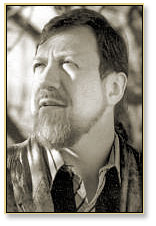 “Force and Violins: What the FBI had on Folksingers” presented by David King Dunaway, Professor of English, University of New Mexico and Professor of Broadcasting, San Francisco State University “Force and Violins: What the FBI had on Folksingers” presented by David King Dunaway, Professor of English, University of New Mexico and Professor of Broadcasting, San Francisco State University
Among the sufferings of those pursued during the McCarthy era, the situation of folksingers and folklorists was unique. Suspected by their government, they were hunted by the FBI almost everywhere. Thanks to the Freedom of Information Act, one can now know the extent of privacy crimes committed against Pete Seeger and other folklorists.
For over twenty years, the FBI and CIA conducted surveillance on folk musicians and folklorists organizing the folksong revivals of the 1930s and ‘40s. As a result of David Dunaway’s successful suit under the Freedom of Information Act, it is now possible to reveal that surveillance, the texts it generated, and how it affected history.
 David King Dunaway received the first Ph.D. in American Studies at the University of California, Berkeley, studying folklore, history, and literature. For the last thirty years he has been documenting the life and work of Pete Seeger, resulting in How Can I Keep From Singing: Pete Seeger, published initially by McGraw Hill in 1981, and currently revised, updated, and republished by Villard Press at Random House in March, 2008. He has served as a visiting lecturer and Fulbright Scholar at the Universities of North Carolina, Chapel Hill, Copenhagen University, Nairobi University, and the Universidad Nacional de Colombia. Author of a half dozen volumes of history and biography, his specialty is the presentation of folklore, literature, and history via broadcasting. Over the last decade he has been executive producer in a number of national radio series for Public Radio International; his reporting appears in NPR’s “Weekend Edition” and “All Things Considered.” He is currently Professor of English at the University of New Mexico and Professor of Broadcasting at San Francisco State University. David King Dunaway received the first Ph.D. in American Studies at the University of California, Berkeley, studying folklore, history, and literature. For the last thirty years he has been documenting the life and work of Pete Seeger, resulting in How Can I Keep From Singing: Pete Seeger, published initially by McGraw Hill in 1981, and currently revised, updated, and republished by Villard Press at Random House in March, 2008. He has served as a visiting lecturer and Fulbright Scholar at the Universities of North Carolina, Chapel Hill, Copenhagen University, Nairobi University, and the Universidad Nacional de Colombia. Author of a half dozen volumes of history and biography, his specialty is the presentation of folklore, literature, and history via broadcasting. Over the last decade he has been executive producer in a number of national radio series for Public Radio International; his reporting appears in NPR’s “Weekend Edition” and “All Things Considered.” He is currently Professor of English at the University of New Mexico and Professor of Broadcasting at San Francisco State University.
Includes descriptions of each lecture and informational essays
from the event flyers. Online video of the lectures are available
for selected events.
2007 Lecture Series
2006 Lecture Series
2005
Lecture Series
2004
Lecture Series
|


 Revolutionaries, Nursery Rhymes, and Edison Wax Cylinders: The Remarkable Tale of the Earliest Korean Sound Recordings
Revolutionaries, Nursery Rhymes, and Edison Wax Cylinders: The Remarkable Tale of the Earliest Korean Sound Recordings A Bard of Nature’s Making: Robert Burns and Scottish Traditional Culture
A Bard of Nature’s Making: Robert Burns and Scottish Traditional Culture Kunqü: China's First Great Multi-art Theatrical Tradition
Kunqü: China's First Great Multi-art Theatrical Tradition "Do All Indians Live in Tipis?" and Other Compelling Questions for Education
"Do All Indians Live in Tipis?" and Other Compelling Questions for Education  Old Cultures/New Contexts: Presenting the Traditional Music and Dance of Urban Immigrant Communities
Old Cultures/New Contexts: Presenting the Traditional Music and Dance of Urban Immigrant Communities  Seeing Mary: Belief, Politics, and Practice at Marian Apparition Sites
Seeing Mary: Belief, Politics, and Practice at Marian Apparition Sites Empires, Multiculturalisms, and Borrowed Heartsongs: What Does It Mean to Sing Russian/Mennonite Songs?
Empires, Multiculturalisms, and Borrowed Heartsongs: What Does It Mean to Sing Russian/Mennonite Songs? From Oral Tradition to Critical Edition: The James Madison Carpenter Collection of Folk Music and Drama,
From Oral Tradition to Critical Edition: The James Madison Carpenter Collection of Folk Music and Drama,  The James Madison Carpenter Project team, comprising folk music and folk drama scholars from the US and the UK, led by Julia C. Bishop, has been working on the collection since 2001 in close cooperation with staff at the American Folklife Center. The team has compiled a detailed finding aid, using xml and, specifically, Encoded Archival Description, which allows the collection to be searched at item level (see
The James Madison Carpenter Project team, comprising folk music and folk drama scholars from the US and the UK, led by Julia C. Bishop, has been working on the collection since 2001 in close cooperation with staff at the American Folklife Center. The team has compiled a detailed finding aid, using xml and, specifically, Encoded Archival Description, which allows the collection to be searched at item level (see  “Force and Violins: What the FBI had on Folksingers”
“Force and Violins: What the FBI had on Folksingers” David King Dunaway received the first Ph.D. in American Studies at the University of California, Berkeley, studying folklore, history, and literature. For the last thirty years he has been documenting the life and work of Pete Seeger, resulting in How Can I Keep From Singing: Pete Seeger, published initially by McGraw Hill in 1981, and currently revised, updated, and republished by Villard Press at Random House in March, 2008. He has served as a visiting lecturer and Fulbright Scholar at the Universities of North Carolina, Chapel Hill, Copenhagen University, Nairobi University, and the Universidad Nacional de Colombia. Author of a half dozen volumes of history and biography, his specialty is the presentation of folklore, literature, and history via broadcasting. Over the last decade he has been executive producer in a number of national radio series for Public Radio International; his reporting appears in NPR’s “Weekend Edition” and “All Things Considered.” He is currently Professor of English at the University of New Mexico and Professor of Broadcasting at San Francisco State University.
David King Dunaway received the first Ph.D. in American Studies at the University of California, Berkeley, studying folklore, history, and literature. For the last thirty years he has been documenting the life and work of Pete Seeger, resulting in How Can I Keep From Singing: Pete Seeger, published initially by McGraw Hill in 1981, and currently revised, updated, and republished by Villard Press at Random House in March, 2008. He has served as a visiting lecturer and Fulbright Scholar at the Universities of North Carolina, Chapel Hill, Copenhagen University, Nairobi University, and the Universidad Nacional de Colombia. Author of a half dozen volumes of history and biography, his specialty is the presentation of folklore, literature, and history via broadcasting. Over the last decade he has been executive producer in a number of national radio series for Public Radio International; his reporting appears in NPR’s “Weekend Edition” and “All Things Considered.” He is currently Professor of English at the University of New Mexico and Professor of Broadcasting at San Francisco State University.